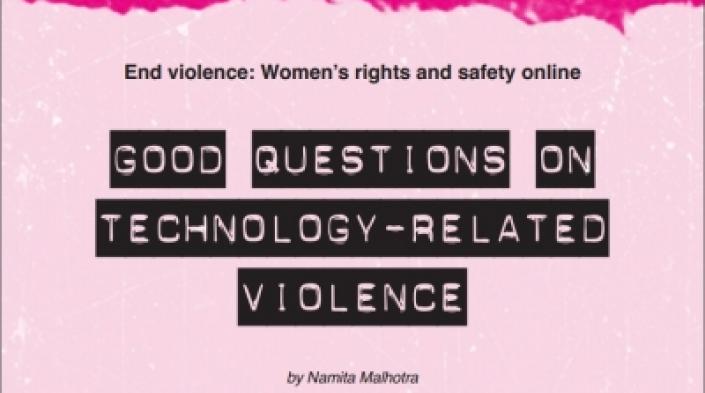
Dernière mise à jour de cette page le
Between April 2013 and June 2014, the Association for Progressive Communications (APC) carried out its multi-country research exploring the adequacy and effectiveness of domestic legal remedies and corporate policies/redress mechanisms to address the issue of technology-related violence against women (VAW). This paper draws on the final research reports from that project, and highlights some of the main findings of the research papers.
Table of contents
IntroductIon
1. What is technology-related or technology-mediated violence against women?
2. “Technology-related VAW is not a serious offence. Other rights issues should be addressed before taking technology-related VAW into account for legal change.”
3. Why is technology-related violence against women not taken seriously by police, courts and other administrative systems?
4. Is it only women who are “victims” or survivors of technology-related violence? What about other people who are excluded from the mainstream or are vulnerable, e.g. transgender people, minorities or ethnic groups, etc.?
5. In most countries the law for violence against women is not adequate. Shouldn’t we first address laws for sexual assault, before turning to technology-related VAW?
6. What are the legal remedies to deal with technology-related VAW in different countries?
7. What about the right to privacy that exists in many countries? Why is this not enough?
8. Should technology-related VAW be a criminal or civil offence? Can’t we use civil remedies to address the increasing incidents of violence against women that use technology?
9. In my country the system is hardly able to deal with cases of VAW (2% of rape cases lead to a conviction). What options remain for women? What should we be lobbying for?
10. Which countries have specific laws to deal with technology-related VAW?
11. What steps do the police and judiciary have to take to make any law for technology-related VAW effective?
12. What is “revenge porn”?
13. Stricter laws for technology-related VAW would necessarily limit freedom of expression – true or false?
14. What kind of technology-related violence against women takes place via social media platforms?
15. What kind of technology-related violence against women takes place via telephony services?
16. What are the challenges or problems of making a complaint to a company? What are the terms of service and what protection can they give?
17. What is a privacy policy and does it give protection against technology-related violence against women? Does it unfairly protect the rights of aggressors?
18. Is the complaint process of a company easily accessible and transparent to the average user?
19. Are the staff able to respond effectively to complaints of technology-related violence against women?
20. How accessible are the complaint mechanisms to those not living in the global North, where the headquarters of these companies are located or national law and policing are more responsive?
21. Can’t companies ban or disrupt the service of the person who is misusing their services for purposes of harassment, bullying, etc.?
22. Aside from TOS and privacy policies, what other legal or other obligations are there to ensure that companies take action in case of a complaint?
23. Which services or platforms provide an effective complaint mechanism for technology-related VAW? What is their response when asked about their commitment to human rights and their response to violence against women or others using their service or platform?
Recommendations for law-making institutions
Recommendations for companies
To read more on the End violence research findings click here.
This research is part of the APC “End violence: Women’s rights and safety online” project funded by the Dutch Ministry of Foreign Affairs (DGIS) and is based on a strong alliance with partners in seven countries: Bosnia and Herzegovina, Colombia, the Democratic Republic of Congo, Kenya, Mexico, Pakistan and the Philippines.


